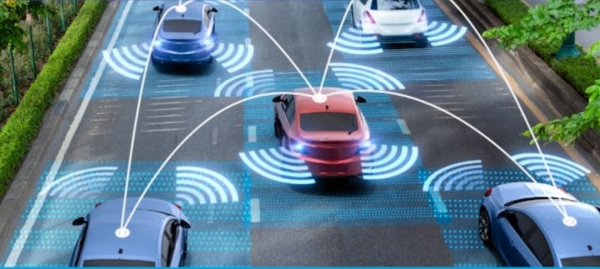Cars that update themselves will be a $700 billion market by 2034

The software-defined vehicle (SDV) and AI cars market is set to be worth over US$700 billion by 2034, representing around 20% of the global car market, according to IDTechEx’s report ‘Software-Defined Vehicles, Connected Cars and AI in Cars 2024-2034. That sum can be sourced from several areas, such as monthly connectivity subscriptions, commission from in-vehicle payments, and one-time software upgrades. Thanks to improvements in-car connectivity, onboard hardware capabilities, and a global shift in consumer preferences toward subscription models, the software-defined vehicle market is set to grow at compound annual rate of 34% between 2023 and 2034, writes James Falkiner, Technology Analyst at IDTechEx.
Today, most SDV revenue comes from selling connectivity as a service. In a similar method to the way cellular providers charge for data services, auto-OEMs partner with cellular providers in different regions to offer cellular internet within vehicles. This internet connection services everything from in-vehicle navigation and over-the-air (OTA) software updates (as used by Tesla to save it billions of dollars in a recent recall), to simply providing a Wi-Fi connection for iPads or phones to use in the vehicle.
The cost of this service varies from region to region; for example, Tesla, one of the SDV market leaders, currently charges £10 in the UK or US$10 in the United States for ‘Premium Connectivity’, which unlocks music streaming, in-vehicle Wi-Fi, and even Karaoke! As more vehicles with ‘self-driving’ features, such as Ford’s BlueCruise or Tesla’s Autopilot, become more common, IDTechEx forecasts that automakers will start generating significant revenue from these features.
Enabled by a vast array of radar, camera, and sometimes LiDAR sensors and powered by onboard AI-compute and vision systems, advanced driving assistance systems (ADAS) are already common on the latest vehicles. While some of these systems are legally required in new vehicles in some regions, such as Automatic Emergency Braking (AEB) in the EU, other systems that make the driving experience more relaxing can be charged as a monthly subscription.
According to IDTechEx’s research, automakers will be able to charge up to 50% more for Level 3 Autonomy (autonomous in certain conditions) compared to Level 2 Autonomy (partial automation, driver still in control). Ford currently charges US$75 a month in the United States for their Level 2 driving technology, BlueCruise, available in their Mustang Mach-E lineup of vehicles. In Europe, Ford charges only roughly €25 a month, depending on the country, demonstrating the variance and flexibility in SDV pricing.
In late 2023, Mercedes announced a partnership with payment provider Mastercard to provide in-vehicle payment options for paying for things like fuel. Secured by biometric authentication (fingerprint sensors or face scanners), commission from in-vehicle payments could be a notable percentage of SDV revenue. At IAA Mobility 2023, IDTechEx spoke with JPMorgan Mobility Payments, a joint venture between JPMorgan and Volkswagen, who discussed the concept of making a car essentially a credit card on wheels, in a similar way to how Apple Pay allows a phone to act as a credit card. While this feature is currently limited in availability, IDTechEx expects this feature to gradually creep into vehicles, becoming common in new vehicles by 2029.
The most controversial software-defined vehicle feature is the concept of Hardware as a Service. Thanks to the hundreds of microcontroller units in a modern software-defined vehicle, as well as car connectivity, automakers can disable or enable certain systems within a vehicle remotely. Using this hardware, customers can purchase and unlock features that are built into the vehicle, even after purchase, without having to visit a garage or dealership. For example, BMW recently reversed a decision to charge monthly for heated steering wheels.
AdvertisementIDTechEx forecasts that in the future, customers may even have the ability to temporarily improve the performance or range of their vehicles or pay a monthly subscription for a higher horsepower model, which will reset back to the baseline model if the customer decides the high performance isn’t for them. IDTechEx forecasts that by 2034, the average customer will be spending just under US$75 a month on software-related features in the vehicle on top of their monthly payments, a value pushed up by a relatively small proportion of customers paying hundreds per month for autonomous driving features, real-time traffic information, or personalisation options.
The IDTechEx report, "Software-Defined Vehicles, Connected Cars, and AI in Cars 2024-2034”, provides a detailed analysis of Software-Defined Vehicles, looking at key technologies, trends, analysis across the value chain, major player analysis, and granular market forecasts.
Share this article:



